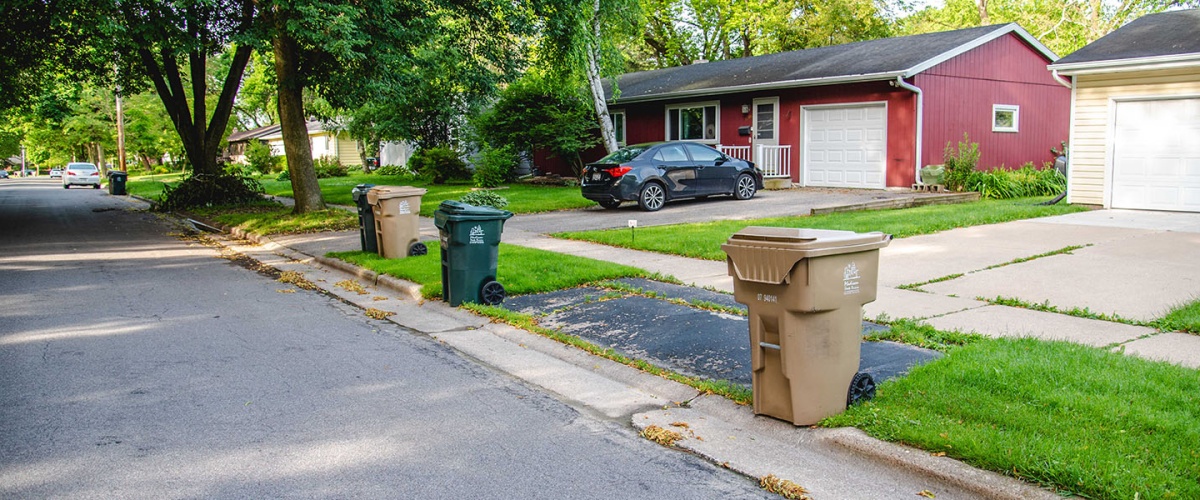Set-Out Dates
Your set-out date for yard waste will be on a Sunday. We will collect the yard waste during the week after your Sunday set-out date.
If your yard waste is not out for pickup on the set-out date, we may not collect it.
We Collect in the Spring and the Fall
Residents get two curbside pickup chances in the spring; one pickup in April and another in May. Springtime set out dates are usually available on the website in February or early March.
Curbside pickup pauses for the summer months as crews are needed for other duties.
Pickup returns in the fall. Residents get get three guaranteed pickup chances in the fall months. Fall set out dates are usually published to the website sometime in August.
How to Place Yard Waste
Please follow these guidelines to make sure we can pick up your yard waste.
- Pile your leaves and yard waste on the terrace, or on the grass at the edge of the street. Do not put leaves in the street.
- Keep yard waste at least 4 feet away from trees, cars, utility poles, mailboxes, fire hydrants, and other obstructions.
Yard Waste vs. Brush
Please separate yard waste and leaves from brush. Yard waste and brush are separate collections.
- Yard waste is plant material from your lawn or garden, including:
- Leaves, weeds, grass clippings, and garden trimmings
- Twigs less than 18 inches long
- Pumpkins, crab apples, vines, corn stalks, and pinecones
- Brush is sticks and branches from trees, shrubs, or bushes.
Covering & Bagging Leaves
You do not need to cover or bag your leaves. However, this helps keep leaves from blowing into the street.
- Compostable paper leaf bags (preferred): Keep your bags open at the top so we can see what is inside.
- Plastic bags: Keep your bags open at the top. We will cut open plastic bags and leave them on the terrace or in your trash cart.
- Tarp or plastic sheet cover: You can cover your leaf piles with a tarp to keep them from blowing away.
Protect Our Lakes
Leaves contain nutrients like phosphorus that are harmful to are lakes and rivers. They contribute to algae blooms and murky water.
When it rains on leaves in the road, the rain takes nutrients from those leaves into the storm drains. And the storm drains take the nutrients into our lakes.
You can help protect our lakes by changing the way you rake your leaves.
- Rake leaves out of the street and onto the terrace before it rains.
- Mulch leaves in your yard using a lawn mower.
- Compost leaves instead of setting them on the curb.
- Cover leaf piles to keep them from blowing into the street.
What should you do with yard waste when crews are not collecting?
